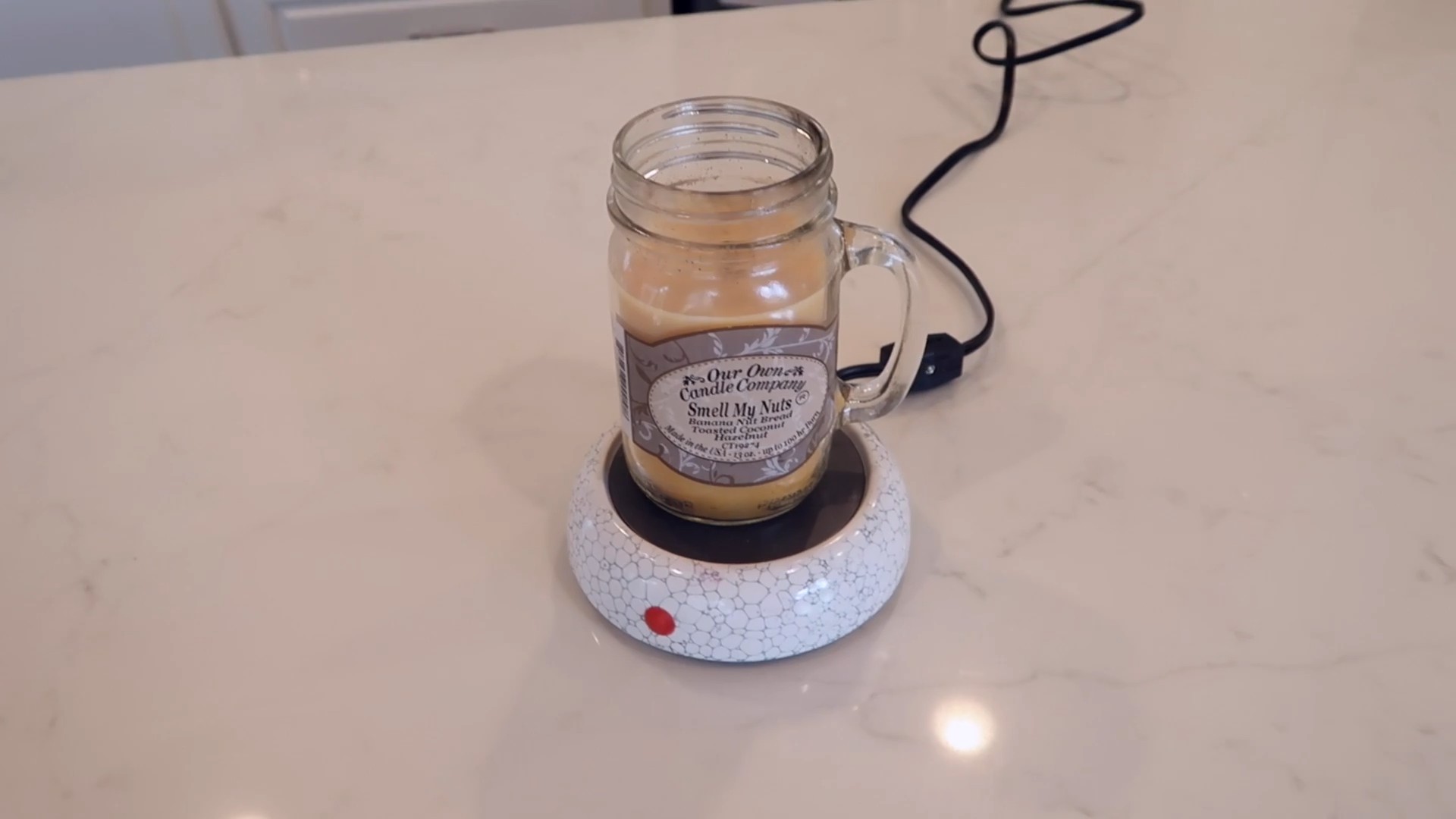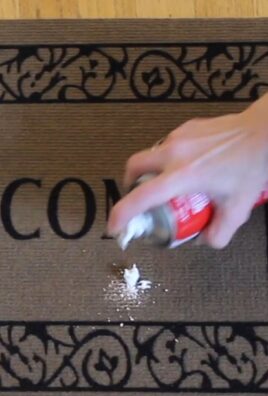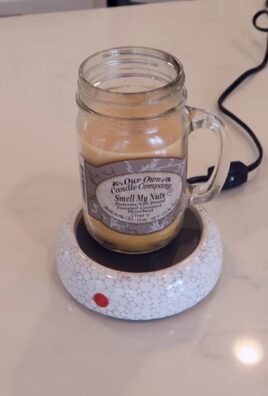Candle Hacks DIY: Ever find yourself staring at a half-burned candle, wondering if there’s more life left in that fragrant wax? I know I have! For centuries, candles have been more than just light sources; they’ve been symbols of hope, celebration, and even remembrance. From ancient Egyptians using beeswax candles to illuminate their ceremonies to modern-day aromatherapy candles filling our homes with calming scents, their significance is undeniable.
But let’s be honest, sometimes getting the most out of our candles feels like a challenge. Drips, uneven burning, and stubborn wax residue can be frustrating. That’s where these amazing candle hacks DIY come in! I’m going to share some simple, clever, and cost-effective tricks to help you extend the life of your favorite candles, prevent messes, and even repurpose leftover wax.
Whether you’re a seasoned candle enthusiast or just starting to explore the world of fragrant flames, these DIY hacks will transform the way you experience candles. Get ready to unlock the full potential of your wax wonders and create a cozy, inviting atmosphere in your home, all while saving money and reducing waste. Let’s dive in and discover the magic of candle hacks!

Growing Yardlong Beans: A DIY Guide to a Bountiful Harvest
Hey there, fellow gardening enthusiasts! I’m so excited to share my experience and tips on growing yardlong beans. These amazing legumes, also known as asparagus beans or Chinese long beans, are not only delicious but also a real conversation starter in the garden. Get ready to impress your neighbors with these incredibly long and flavorful beans!
Choosing the Right Variety and Location
Before we dive into the nitty-gritty, let’s talk about selecting the right yardlong bean variety and finding the perfect spot for them to thrive.
* Variety Selection: There are several yardlong bean varieties available, each with slightly different characteristics. Some popular choices include ‘Red Noodle,’ ‘Chinese Red Noodle,’ and ‘Orient Wonder.’ I personally love ‘Red Noodle’ for its vibrant color and excellent flavor. Consider your local climate and growing season when making your selection.
* Sunlight: Yardlong beans are sun worshippers! They need at least 6-8 hours of direct sunlight each day to produce a good harvest. Choose a location in your garden that receives plenty of sunshine throughout the day.
* Soil: These beans prefer well-drained soil that is rich in organic matter. Amend your soil with compost or well-rotted manure before planting to improve its fertility and drainage. A slightly acidic to neutral pH (around 6.0-7.0) is ideal.
* Support System: Yardlong beans are climbing plants, so they need a sturdy support system to grow on. You can use a trellis, fence, or even a teepee structure. I’ve found that a trellis works best for me, as it provides ample support and allows for good air circulation.
Step-by-Step Planting Guide
Now that we’ve covered the basics, let’s get our hands dirty and start planting!
1. Prepare the Soil: Start by clearing the planting area of any weeds or debris. Then, amend the soil with compost or well-rotted manure. Dig it in well to a depth of about 12 inches. This will provide your beans with the nutrients they need to get off to a strong start.
2. Install the Support System: Before planting, make sure your trellis or other support system is securely in place. This will prevent you from disturbing the plants later on. I like to use sturdy wooden posts and wire mesh for my trellis.
3. Sowing the Seeds: Yardlong beans are best sown directly into the garden after the last frost. You can also start them indoors 2-3 weeks before the last frost, but be careful when transplanting them, as they don’t like to have their roots disturbed.
* Direct Sowing: Sow the seeds about 1 inch deep and 2-3 inches apart along the base of your trellis. Water them gently after planting.
* Starting Indoors: Sow the seeds in small pots or seedling trays filled with seed-starting mix. Keep the soil moist and warm (around 70-80°F). Once the seedlings have developed a few true leaves, you can transplant them into the garden, spacing them 2-3 inches apart along the base of your trellis.
4. Watering: Keep the soil consistently moist, but not waterlogged. Water deeply whenever the top inch of soil feels dry. Avoid overhead watering, as this can promote fungal diseases. I prefer to use a soaker hose or drip irrigation system to water my beans.
5. Mulching: Apply a layer of mulch around the base of the plants to help retain moisture, suppress weeds, and regulate soil temperature. I like to use straw or shredded leaves for mulch.
Caring for Your Yardlong Beans
Once your yardlong beans are planted, it’s important to provide them with the care they need to thrive.
* Fertilizing: Yardlong beans are relatively light feeders, but they will benefit from occasional fertilization. Apply a balanced fertilizer (such as 10-10-10) every 4-6 weeks, following the instructions on the package. You can also use a liquid seaweed fertilizer for a gentle boost.
* Pruning: Pruning is not essential for yardlong beans, but it can help to improve air circulation and encourage bushier growth. You can pinch off the tips of the vines to promote branching.
* Pest and Disease Control: Keep an eye out for common bean pests, such as aphids, bean beetles, and spider mites. You can control these pests with insecticidal soap or neem oil. Fungal diseases, such as powdery mildew and bean rust, can also be a problem. Prevent these diseases by providing good air circulation and avoiding overhead watering. If you notice any signs of disease, treat the plants with a fungicide. I always try to use organic pest and disease control methods whenever possible.
* Training the Vines: As the yardlong bean vines grow, you’ll need to train them to climb up the trellis. Gently guide the vines up the support system and tie them in place with twine or plant clips. This will help to keep the vines organized and prevent them from sprawling on the ground.
Harvesting Your Bounty
The most exciting part of growing yardlong beans is, of course, harvesting your delicious crop!
* Harvest Time: Yardlong beans are typically ready to harvest about 60-80 days after planting. The beans should be long and slender, but still tender. They should snap easily when bent.
* Harvesting Technique: Use scissors or pruning shears to cut the beans from the vine. Be careful not to damage the plant. Harvest the beans regularly to encourage continued production. I usually harvest my beans every 2-3 days.
* Storage: Freshly harvested yardlong beans can be stored in the refrigerator for up to a week. You can also freeze them for longer storage. To freeze, blanch the beans in boiling water for 2-3 minutes, then plunge them into ice water. Drain well and store in freezer bags or containers.
Troubleshooting Common Problems
Even with the best care, you may encounter some problems when growing yardlong beans. Here are a few common issues and how to address them:
* Poor Germination: If your yardlong bean seeds are not germinating, it could be due to several factors, such as cold soil, poor quality seeds, or overwatering. Make sure the soil is warm enough (around 70-80°F) and use fresh, high-quality seeds. Avoid overwatering, as this can cause the seeds to rot.
* Yellowing Leaves: Yellowing leaves can be a sign of nutrient deficiency, overwatering, or pest infestation. Check the soil pH and nutrient levels. Adjust your watering schedule and treat any pests or diseases.
* Lack of Flowers or Pods: If your yardlong beans are not producing flowers or pods, it could be due to insufficient sunlight, poor pollination, or nutrient deficiency. Make sure the plants are receiving at least 6-8 hours of direct sunlight each day. You can also try hand-pollinating the flowers by gently brushing them with a small paintbrush. Fertilize the plants with a balanced fertilizer.
* Pest Infestations: Aphids, bean beetles, and spider mites are common pests of yardlong beans. Control these pests with insecticidal soap or neem oil. You can also try attracting beneficial insects, such as ladybugs and lacewings, to your garden.
* Disease Problems: Powdery mildew and bean rust are common fungal diseases that can affect yardlong beans. Prevent these diseases by providing good air circulation and avoiding overhead watering. If you notice any signs of disease, treat the plants with a fungicide.
Enjoying Your Harvest
Now that you’ve successfully grown and harvested your yardlong beans, it’s time to enjoy the fruits (or rather, vegetables) of your labor! Yardlong beans are incredibly versatile and can be used in a variety of dishes.
* Stir-fries: Yardlong beans are a popular ingredient in stir-fries. They add a delicious crunch and a slightly sweet flavor.
* Salads: You can also add yardlong beans to salads for a refreshing and nutritious boost.
* Soups and Stews: Yardlong beans can be added to soups and stews for extra flavor and texture.
* Steamed or Boiled: Simply steam or boil the beans and serve them as a side dish.
* Grilled: Grill the beans for a smoky and flavorful treat.
I personally love to stir-fry my yardlong beans with garlic, ginger, and soy sauce. It’s a quick, easy, and delicious meal that’s perfect for a weeknight dinner.
Final Thoughts
Growing yardlong beans is a rewarding experience that will add a unique and delicious element to your garden. With a little bit of care and attention, you can enjoy a bountiful harvest of these amazing legumes. So, get out there and start planting! Happy gardening!

Conclusion
So there you have it! This simple yet effective candle hacks DIY method is more than just a clever trick; it’s a game-changer for anyone who loves the ambiance and fragrance of candles but hates the inevitable waste and uneven burning. We’ve shown you how to maximize the life of your favorite candles, ensuring you get every last bit of wax and fragrance. No more throwing away half-used candles!
But why is this a must-try? Beyond the obvious cost savings, this DIY approach empowers you to be more sustainable and resourceful. You’re reducing waste, repurposing materials, and creating something new and beautiful from what would otherwise be discarded. Plus, it’s incredibly satisfying to see a project come to fruition, knowing you’ve extended the life of something you enjoy.
The possibilities are endless when it comes to variations. Consider adding dried flowers or herbs to your melted wax for a personalized touch. Experiment with different essential oil blends to create custom fragrances that suit your mood and preferences. You could even layer different colored waxes for a visually stunning effect. Think about using old teacups, vintage jars, or even seashells as unique containers for your repurposed candles. The only limit is your imagination!
Don’t be afraid to get creative and experiment. This candle hacks DIY is incredibly forgiving, and even if your first attempt isn’t perfect, you’ll learn something valuable along the way. The most important thing is to have fun and enjoy the process of creating something beautiful and useful.
We truly believe this DIY trick will transform your candle-burning experience. It’s economical, eco-friendly, and allows for endless customization. So, gather your supplies, embrace your inner DIY enthusiast, and give it a try!
We’re confident you’ll be amazed by the results. And more importantly, we want to hear about your experience! Share your photos, tips, and variations in the comments below. Let us know what worked for you, what challenges you faced, and any creative ideas you came up with. Let’s build a community of candle-loving DIYers who are passionate about sustainability and resourcefulness. Your feedback will not only inspire others but also help us refine and improve this method even further. So, go ahead, light up your life with this fantastic candle hacks DIY and share your story with the world! We can’t wait to see what you create!
Frequently Asked Questions (FAQ)
What kind of wax works best for this candle hacks DIY?
Generally, most candle waxes are suitable for this DIY. Paraffin wax, soy wax, beeswax, and even blends can be melted and repurposed. However, keep in mind that different waxes have different melting points and burn characteristics. Soy wax, for example, tends to have a lower melting point than paraffin wax. If you’re mixing different types of wax, be sure to research their properties to ensure a consistent burn. If you are using old candle remnants, try to keep the wax types similar to avoid uneven burning or scent throw.
Is it safe to melt wax at home? What precautions should I take?
Melting wax at home is generally safe if you follow proper precautions. Always use a double boiler or a heat-safe bowl set over a pot of simmering water. Never melt wax directly on the stovetop, as this can cause it to overheat and potentially ignite. Use a thermometer to monitor the wax temperature and ensure it doesn’t exceed the recommended range for your specific type of wax. Keep a fire extinguisher nearby and never leave the melting wax unattended. Work in a well-ventilated area to avoid inhaling fumes. Wear oven mitts or heat-resistant gloves to protect your hands from burns.
What kind of containers can I use for my repurposed candles?
The possibilities are endless when it comes to containers! You can use old teacups, mason jars, vintage tins, ceramic bowls, seashells (for small candles), or even repurposed candle jars. Just make sure the container is heat-resistant and non-flammable. Avoid using plastic containers, as they can melt or warp when exposed to heat. Before pouring the wax, ensure the container is clean and dry. You can also preheat the container slightly to prevent the wax from cooling too quickly and cracking.
How do I add fragrance to my repurposed candles?
You can add fragrance to your repurposed candles by using essential oils or fragrance oils specifically designed for candle making. Add the fragrance oil to the melted wax just before pouring it into the container. The recommended fragrance load is typically around 6-10% of the total wax volume, but always refer to the manufacturer’s instructions for the specific fragrance oil you’re using. Stir the fragrance oil thoroughly into the wax to ensure it’s evenly distributed. Experiment with different fragrance blends to create custom scents that you love.
What type of wicks should I use for my DIY candles?
The type of wick you use will depend on the size and diameter of your candle container, as well as the type of wax you’re using. Generally, thicker wicks are needed for larger candles and waxes with higher melting points. Pre-waxed wicks are a convenient option, as they’re already coated with wax and ready to use. You can also purchase wick tabs to secure the wick to the bottom of the container. Refer to a wick sizing chart to determine the appropriate wick size for your specific candle project. It’s always better to err on the side of a slightly smaller wick, as a wick that’s too large can cause excessive smoking and soot.
My candle is tunneling. How can I fix it?
Tunneling occurs when a candle burns down the center, leaving a ring of unmelted wax around the edges. To fix tunneling, you can try the “foil method.” Wrap a piece of aluminum foil around the top of the candle, leaving a small opening in the center. This will trap the heat and help melt the remaining wax around the edges. Burn the candle for a few hours until the entire surface is melted. Alternatively, you can use a heat gun or hairdryer to gently melt the wax around the edges. In the future, ensure that you allow your candle to burn long enough on the first burn to create a full melt pool that reaches the edges of the container.
How can I clean up spilled wax?
Spilled wax can be a pain to clean up, but it’s not impossible. Allow the wax to cool and harden completely. Once hardened, you can often scrape it off with a plastic scraper or credit card. For fabric or carpet, place a piece of paper towel or brown paper bag over the wax and iron over it with a warm iron. The heat will melt the wax, which will then be absorbed by the paper towel. Repeat as needed until all the wax is removed. For hard surfaces, you can use a hairdryer to gently warm the wax and then wipe it away with a cloth.
Can I reuse old candle jars? How do I clean them?
Absolutely! Reusing old candle jars is a great way to be sustainable. To clean them, first remove any remaining wax. You can do this by placing the jar in the freezer for a few hours, which will cause the wax to shrink and make it easier to pop out. Alternatively, you can pour boiling water into the jar, which will melt the wax and allow it to float to the top. Once the wax is removed, wash the jar with hot, soapy water. You may need to use a scraper or sponge to remove any stubborn residue. Make sure the jar is completely dry before using it for your repurposed candles.
What if my candle wick keeps drowning in the wax?
A drowning wick usually indicates that the wick is too small for the candle diameter or that the wax is too soft. Try using a slightly thicker wick in your next candle. You can also try pouring off some of the excess melted wax while the candle is burning to expose more of the wick. If the wax is too soft, consider adding a small amount of beeswax to the wax blend to increase its hardness. Ensure the wick is properly centered in the container to promote even burning.
How do I prevent my candles from smoking?
Candle smoking is often caused by a wick that’s too long or a buildup of carbon on the wick. Trim the wick to about 1/4 inch before each burn. Avoid burning candles in drafty areas, as this can cause the flame to flicker and produce more smoke. Use high-quality wax and fragrance oils, as cheaper ingredients can contribute to smoking. If your candle is smoking excessively, extinguish it and allow it to cool completely before trimming the wick and relighting it.




Leave a Comment